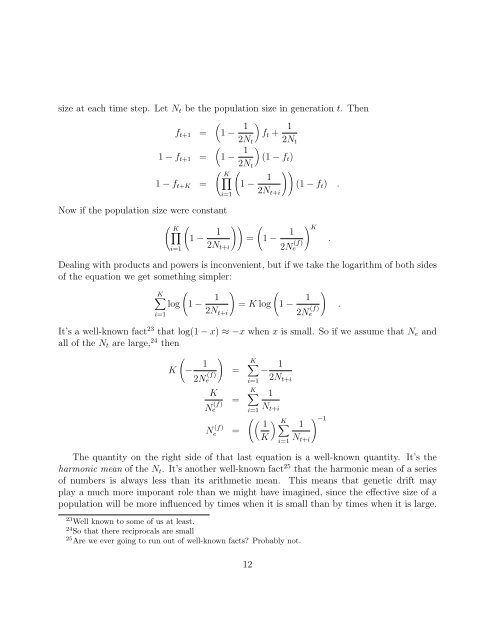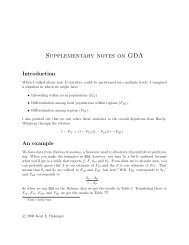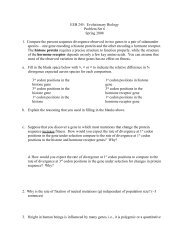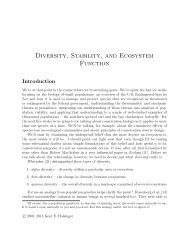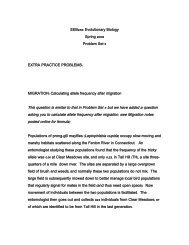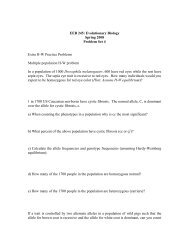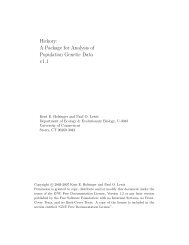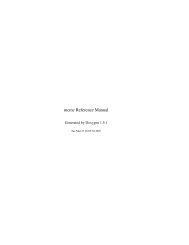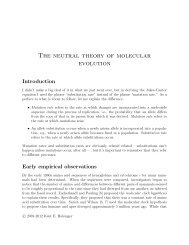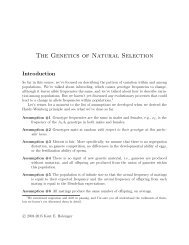Genetic Drift - Kent Holsinger
Genetic Drift - Kent Holsinger
Genetic Drift - Kent Holsinger
Create successful ePaper yourself
Turn your PDF publications into a flip-book with our unique Google optimized e-Paper software.
size at each time step. Let N t be the population size in generation t. Thenf t+1 =1 − f t+1 =1 − f t+K =Now if the population size were constant(1 − 1f t + 12N t)2N t(1 − 1 )(1 − f t )2N t(∏ K(i=11 − 12N t+i))(1 − f t ) .(∏ K(1 − 1 )) (= 1 − 1 ) K.i=12N t+i 2N e(f)Dealing with products and powers is inconvenient, but if we take the logarithm of both sidesof the equation we get something simpler:(K∑log 1 − 1 ) (= K log 1 − 1 )i=12N t+i 2N e(f)It’s a well-known fact 23 that log(1 − x) ≈ −x when x is small. So if we assume that N e andall of the N t are large, 24 then(K − 1 )2N e(f)KN (f)e==N (f)e =K∑i=1K∑− 12N t+i1i=1N t+i)∑ K( ( 1Ki=1) −11N t+iThe quantity on the right side of that last equation is a well-known quantity. It’s theharmonic mean of the N t . It’s another well-known fact 25 that the harmonic mean of a seriesof numbers is always less than its arithmetic mean. This means that genetic drift mayplay a much more imporant role than we might have imagined, since the effective size of apopulation will be more influenced by times when it is small than by times when it is large.23 Well known to some of us at least.24 So that there reciprocals are small25 Are we ever going to run out of well-known facts? Probably not..12


